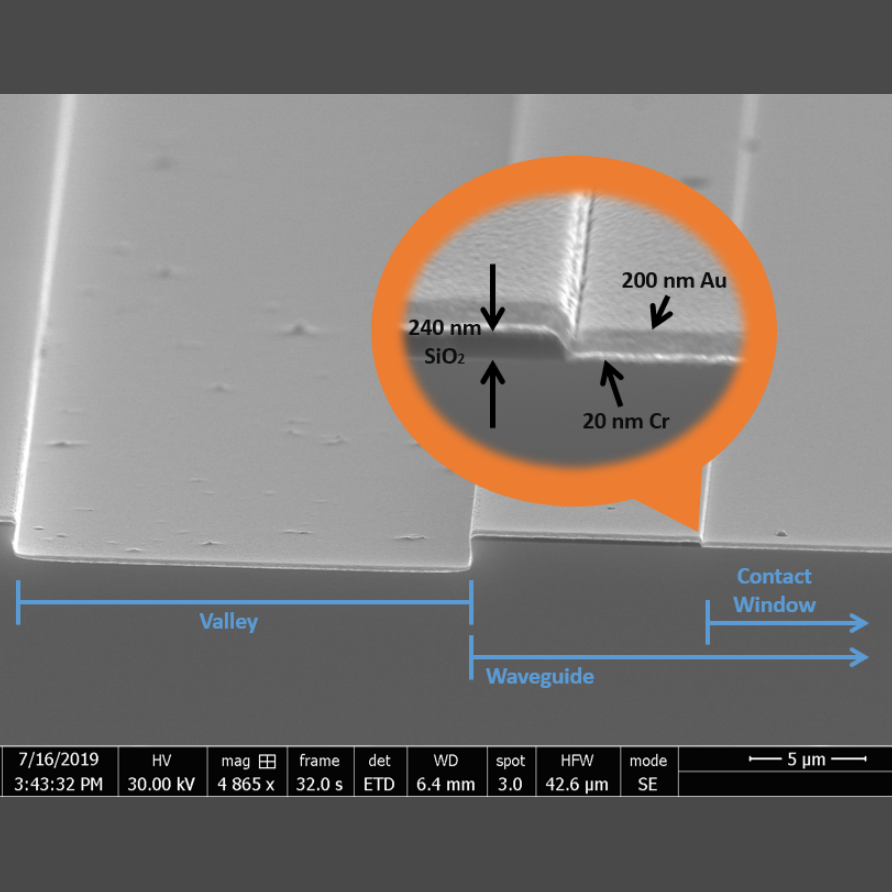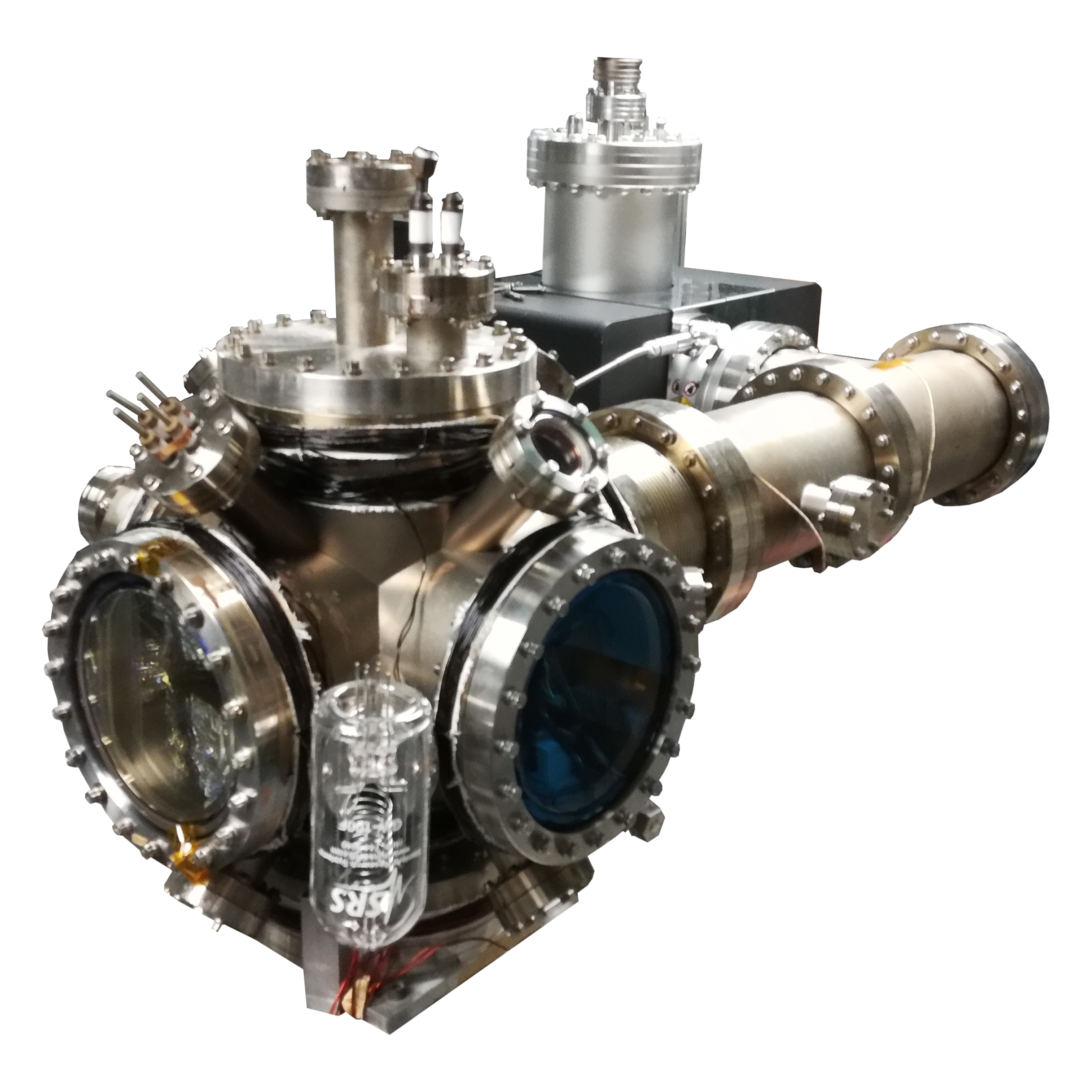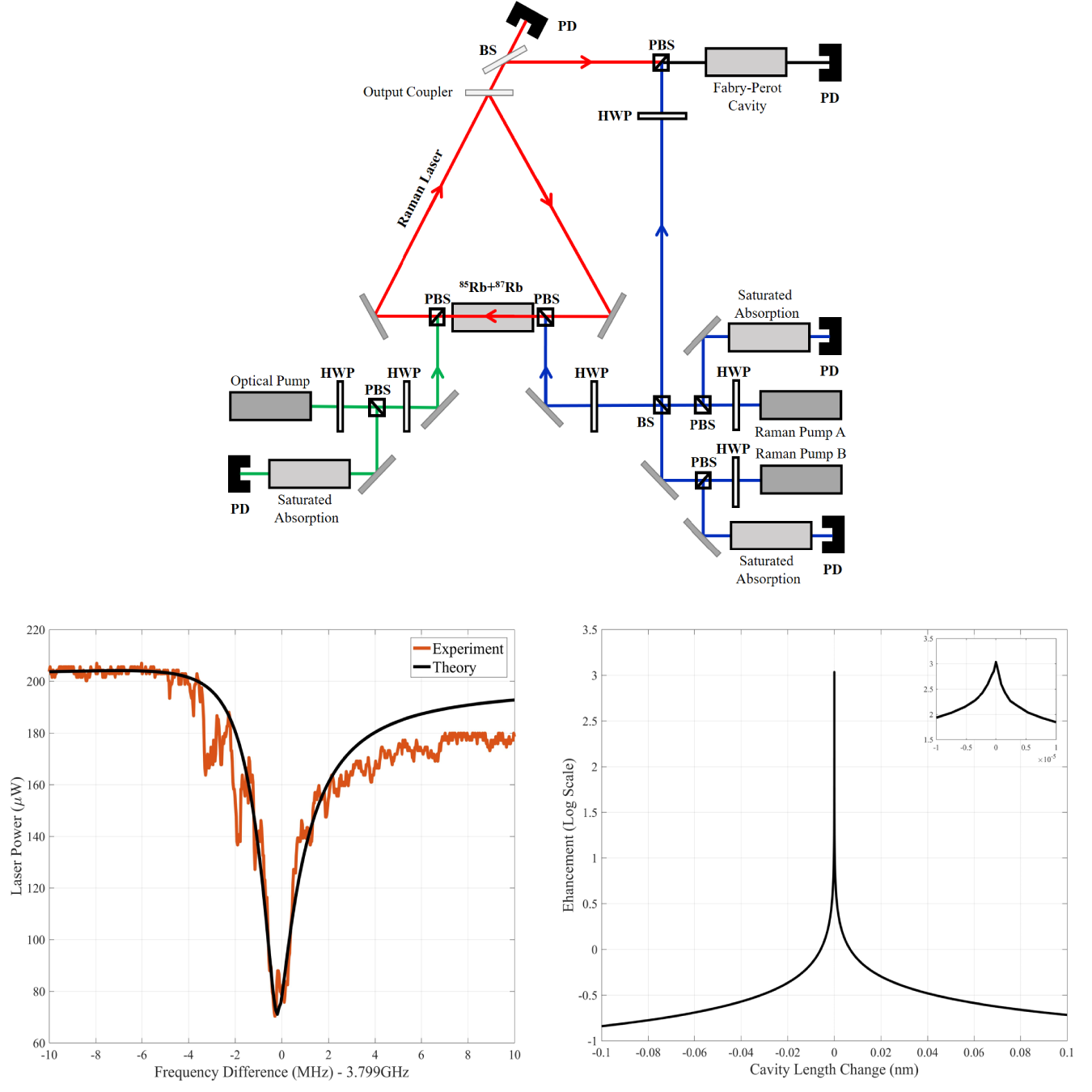
Most recent publications
- Y. Sternfeld, et al.,Electromagnetically induced transparency in Raman gain for realizing a superluminal ring laser, Optics Express 29 (2), 1125 (2021).
- Z. Zhou, et al.,Phase correlation during two-photon resonance process in an active cavity, Applied Optics, Vol. 59, Issue 3, pp. 866-872 (2020).
- Z. Zhou, et al.,A superluminal Raman laser with enhanced cavity length sensitivity, Optics Express 27, 29739-29745 (2019).
Superluminal and Subluminal Lasers
A superluminal laser is a laser inside which the group velocity of laser field is larger than the speed of light in vacuum. To create the fast light condition inside the laser cavity, a negative dispersive gain medium is necessary. Previously, we showed different approaches for realizing superluminal lasers, such as Raman depletion combined with Diode-Pumped Alkali Laser (DPAL), double Raman gain, Raman gain and Raman depletion in both isotopes of Rb vapor, and EIT in Raman gain. We also showed that such lasers have enhanced sensitivity in perturbation in cavity length, which is also equivalent to rotation in ring lasers. This property makes superluminal lasers ideal for metrological devises such as gyroscopes and accelerometers. The passive version of a superluminal laser, which is also known as the white light cavity (WCL), are widely used in different areas, e.g. gravitational wave detection, rotation sensing, and measurement of strains. Subluminal lasers are lasers inside which the group velocity is smaller than the speed of light in vacuum. Due to the nature of the gain medium, most of the regular lasers are subluminal lasers. But we are more interested in those where group velocity is much smaller than the speed of light in vacuum. We have demonstrated different approaches such as Raman gain combined with DPAL and Raman laser. And recently we believe that the passive version of a subluminal laser, which is a passive cavity with slow light medium inside, can be useful for dark matter detections.
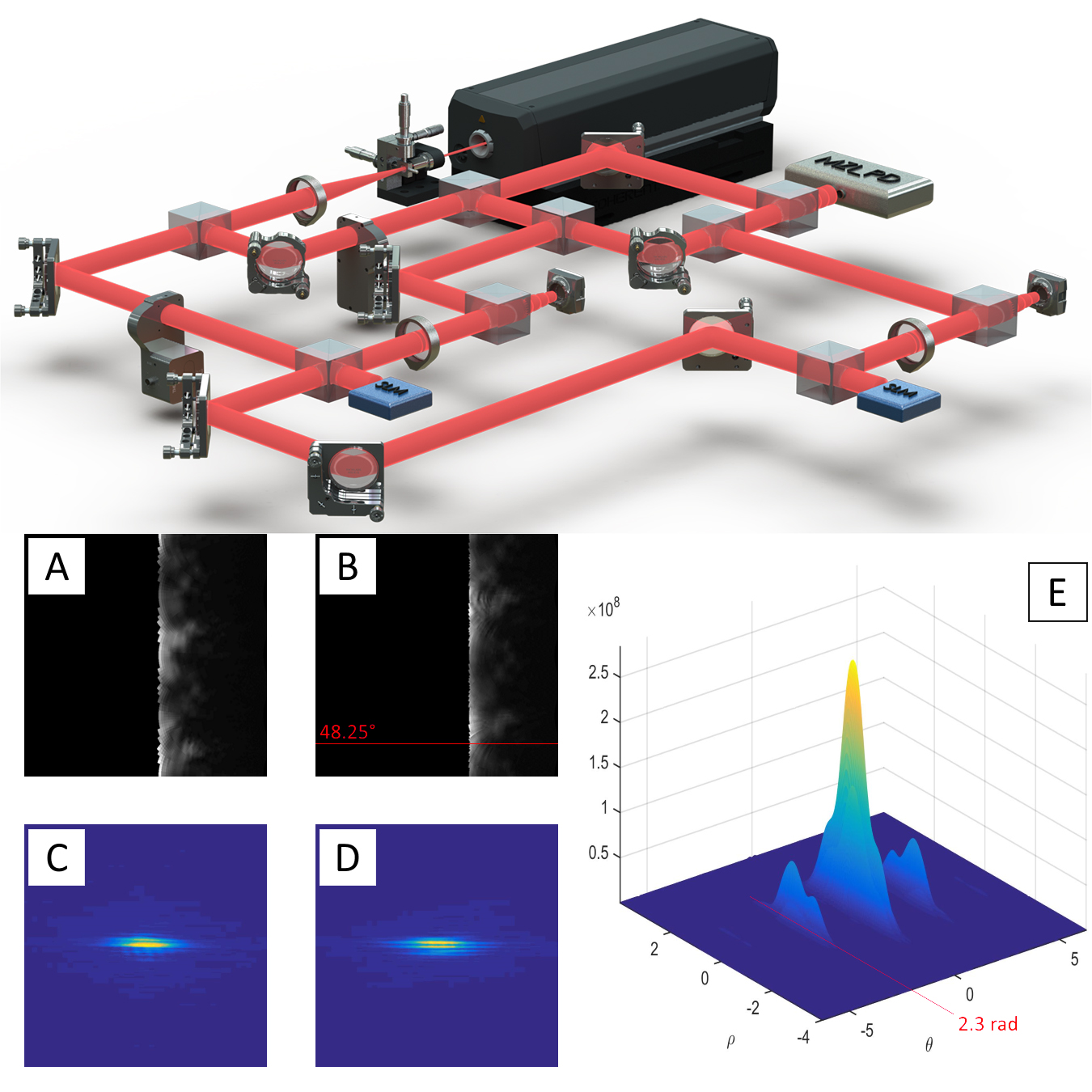
Most recent publications
- J. Gamboa, et al., Demonstration of shift, scale, and rotation invariant target recognition using the hybrid opto-electronic correlator, Opt. Express 27 (12), 16507, (2019).
- M.S. Monjur, et al., Experimental demonstration of the hybrid opto-electronic correlator for target recognition, Applied Optics 56, Issue 10, 2754-2759, (2017).
- M.S. Monjur, et al., Incorporation of Polar Mellin Transform in a Hybrid Optoelectronic Correlator for Scale and Rotation Invariant Target Recognition, J. Opt. Soc. Am. A 31 No. 6, 1259-1272 (2014).
Hybrid Optoelectronic Correlator
The Hybrid Optoelectronic Correlator (HOC) was proposed and demonstrated at LAPT. We have shown that it is capable of producing shift, rotation, and scale invariant target recognition. The maximum operating speed for this device is estimated to be on the order of 5μs, which would allow it to function as an input filter for more resource intensive image processing systems. The HOC uses optics to perform real-time 2D Fourier Transforms (FTs) of arbitrary images. The magnitudes can be directly measured using focal plane arrays (FPAs). To capture the phases of these images, we employ PID-controlled auxiliary plane waves to interfere with the FTs. These signals are detected and transferred into the electronic domain, being added, subtracted, and multiplied using an FPGA on a pixel-by-pixel basis. The resulting signal is subsequently sent back to the optical domain using a spatial light modulator, where it can be FT'd to produce the 2D cross-correlation of the input images. Due to the properties of FTs, this is inherrently shift invariant. To achieve scale and rotation invariance, we incorporate the polar Mellin transform, which produces unique signatures for each input image.
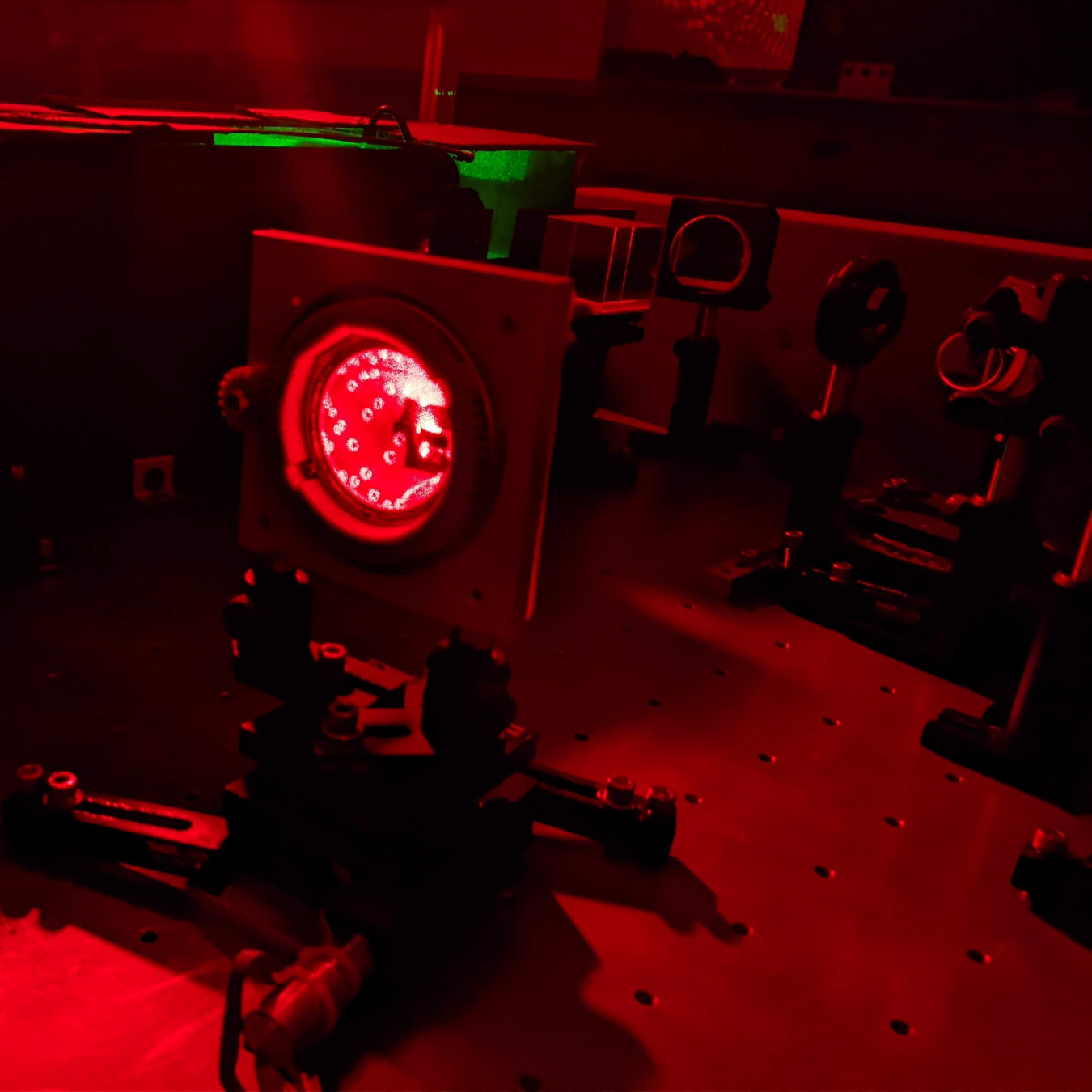
Most recent publications
- J. Gamboa, et al., PQ:PMMA Holographic Wavelength Division Multiplexing Filters For Use in Monocular Passive Ranging and Free Space Optical Communications, Frontiers in Optics/Laser Science, Optical Society of America (2020), paper FW7A.1
PQ:PMMA Holographic WDM
Holograms are formed when beams of light interfere inside a photosensitive medium. In a mechanic similar to that of old analog photographs, the light reacts with the material and creates a recording (often in 3D in the case of thick holograms). Because the recording was formed through an interference pattern, it will contain the amplitude and phase information of the beams that were used to create it, forming a grating. The exact properties of the grating can be tailored depending on the writing characteristics, allowing for custom input/output angles, diffraction efficiencies, peak wavelengths, etc. Furthermore, because of the mechanism through which they are formed, holograms can be stacked at the same location, allowing for multiple gratings to occupy the same space. We can take advantage of this to create high density optical storage of images that can be accessed at ultra-high speeds, which we do in our HOC project. Phenanthrenequinone (PQ) doped poly-methyl(methacrylate) (PMMA) is a holographic polymer that is synthesized as a liquid but cures into a solid, which allows for the fabrication of substrates of arbitrary shapes and sizes. The PQ is a photosensitive dye that, when exposed to light, reacts with MMA and PMMA to form oligomers. When interfering two beams in this substrate, this reaction effectively modulates the refractive index of the material, thus forming a phase grating.
Photonic Integrated Circuit
This project is done in collaboration with the Center for Nanoscale Materials (CNM) at the Argonne National Laboratory (ANL). Integrated photonics have the inherent advantage of being less sensitive to vibrations than discrete optical components. This is critical for many applications, but especially so in our fast-light accelerometer/gyroscope project. We are currently researching the development of a complete optical system on a chip using an AlGaAs/GaAs substrate. The chip will incorporate lasers, detectors, waveguides, isolators, modulators, and other components. So far, we have demonstrated Y-junctions, passive waveguides, lasers, and detectors on our substrates, and we are now looking to combine these components. However, our AlGaAs substrate has a quantum well for active operation, and so we will need to use quantum well disordering in order to combine active and passive components on the same chip.
Enhanced Measurement by Spin-Squeezing
In the mid-1980’s, three-wave-mixing studies revealed that entangled pairs of photons could be created which exhibited a non-classical phase space. This means that the standard deviation of one of a pair of non-commuting observables that together constitute an uncertainty principle, can be squeezed (reduced) to a value below that expected by a minimum-uncertainty state such as the vacuum. Squeezing is accomplished by creating correlations between the particles composing the system. For example, it is now commonplace to squeeze the noise in the intensity or phase of an electromagnetic field by a factor of ten. The reduction of noise in an observable of interest shows great promise for enhancing precision measurements. Squeezing techniques are increasingly being adapted to new quantum-mechanical systems. Our project aims to exploit the squeezing of the angular momentum of a collective state of rubidium atoms in an atomic clock and an atomic sensor for the measurement of magnetic fields. Both of these apparatuses will require slowing and trapping an ensemble of Rb atoms for which we are employing a Zeeman slower, a magneto-optical trap, and an optical-dipole trap. Squeezing operations will be conducted by nonlinear excitation in a Pound-Drever-Hall-locked ring cavity. Quantum control and state readout will be performed by narrowband lasers that are locked to the lines of a Doppler-free Rb absorption spectrum.
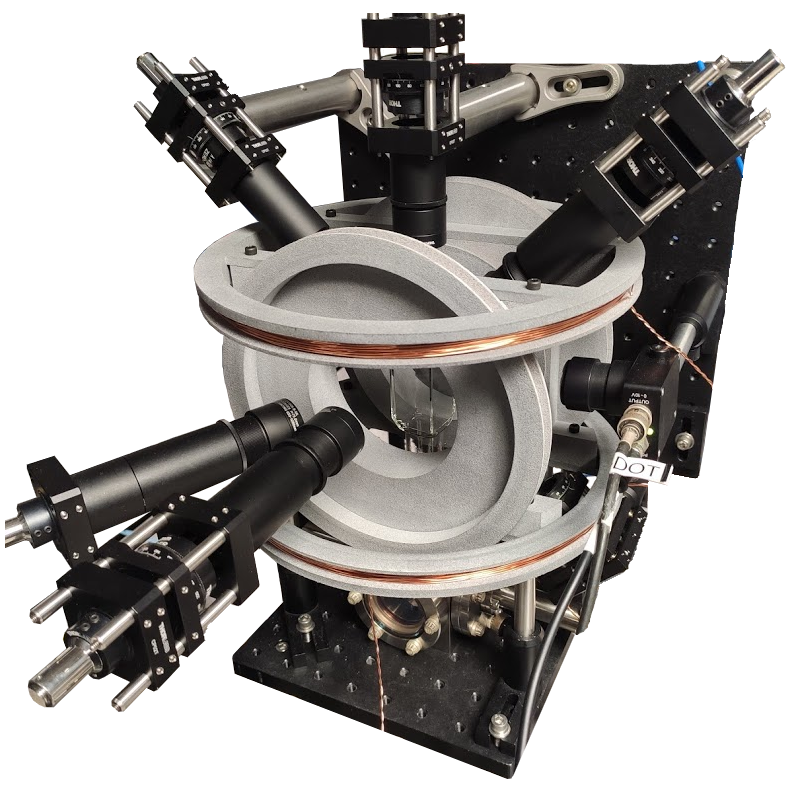
Most recent publications
- J. Li, et al., Highly-sensitive multi-axes rotation sensing using large momentum transfer point source atom interferometry, Conference on Light and Electro-Optics, Optical Society of America, (2020). paper STu3F.3.
Quantum Gyroscope
A point source atom interferometer (PSI) is a device where atoms are split and recombined by applying a temporal sequence of Raman pulses during the expansion of a cloud of cold atoms. Under a rotation, there will be interference fringes on the final atomic cloud due to the Sagnac effect. The density of the fringes is proportional to the angular velocity of the rotation and the orientation of the fringes indicates the direction of the angular velocity. Therefore, the PSI can work as a sensitive multi-axis gyroscope. In a PSI, an atom is first split into two parts. Then, the two parts follow different paths and recombine to interfere. The density of the fringes is proportional to the distance between the two parts of the atom. To separate the two parts of the atom farther, we increase the momentum difference between them. That is the technique of large momentum transfer (LMT). With this technique, it is promising to enhance the sensitivity of the PSI.
